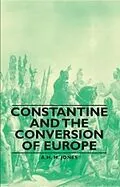Constantine the Great was Roman Emperor from 306 to 337 AD. As emperor, Constantine enacted many administrative, financial, social, and military reforms to strengthen the empire. The government was restructured and civil and military authority separated. A new gold coin, the solidus, was introduced to combat inflation. It would become the standard for Byzantine and European currencies for more than a thousand years.
Autorentext
A. H. M. Jones (1904-1970) was a distinguished British historian and scholar, specialising in the history of the later Roman Empire. His comprehensive works, such as 'Constantine and the Conversion of Europe' and 'The Later Roman Empire, 284-602', are highly regarded for their meticulous research and insightful analysis of Roman history, society, and governance.
Zusammenfassung
From his influence on economics and governance to his pivotal role in popularising Christianity, this is a compelling exploration of the transformative reign of Constantine the Great, Roman Emperor from 306 to 337 AD.Constantine the Great (c. 272 337) was a pivotal figure in the history of both the Roman Empire and Christianity. The first Roman emperor to convert to Christianity, he eradicated Christian persecution and was influential in the religion s spread throughout Ancient Rome. His rule was marked by sweeping administrative, financial, social, and military reforms designed to strengthen and stabilise the sprawling empire. His introduction of the solidus, a new gold coin, effectively combated inflation and set the standard for Byzantine and European currencies for over a millennium.Constantine and the Conversion of Europe explores the complexities of his religious policies, his support for the Christian Church, and the profound effects of his conversion on European history. A thoughtful and engaging account of one of history's most influential emperors, this book is perfect for those interested in Roman history and early Christianity.
